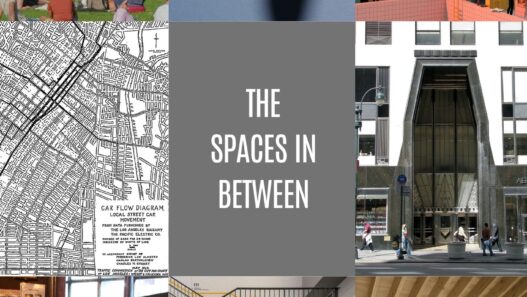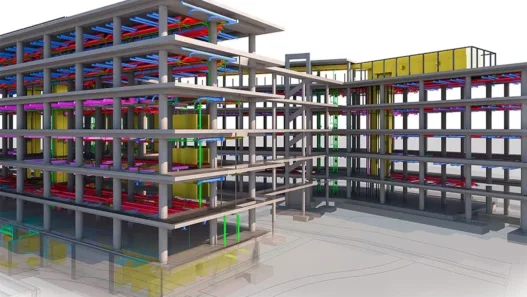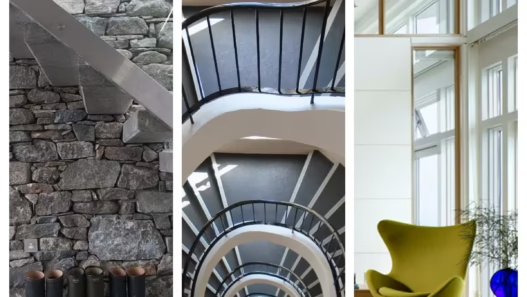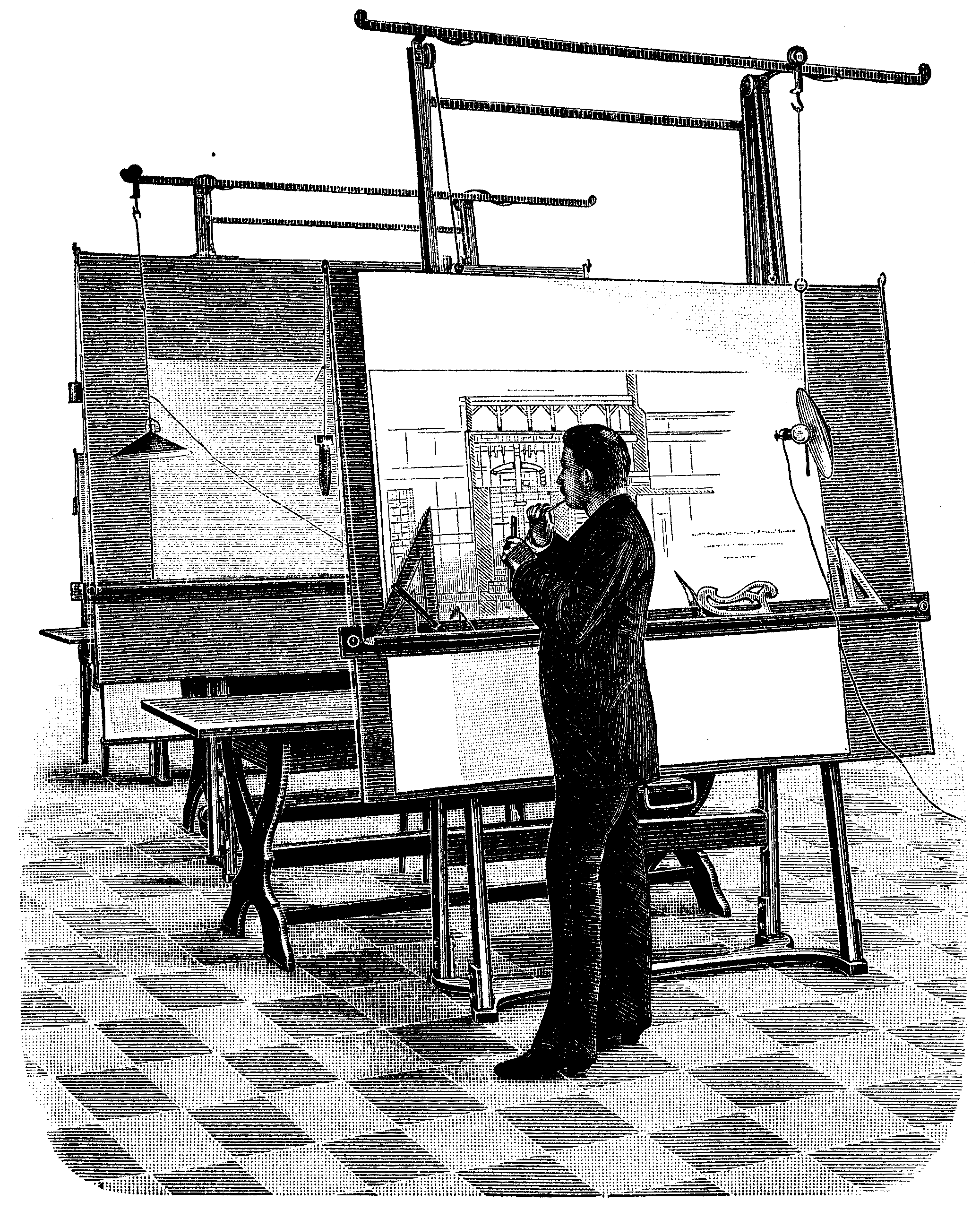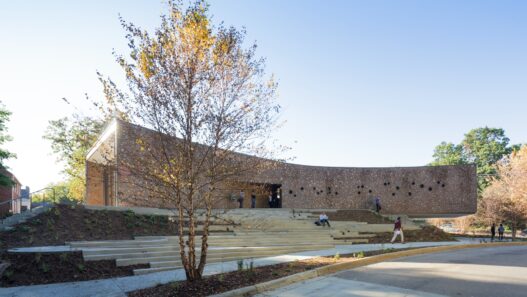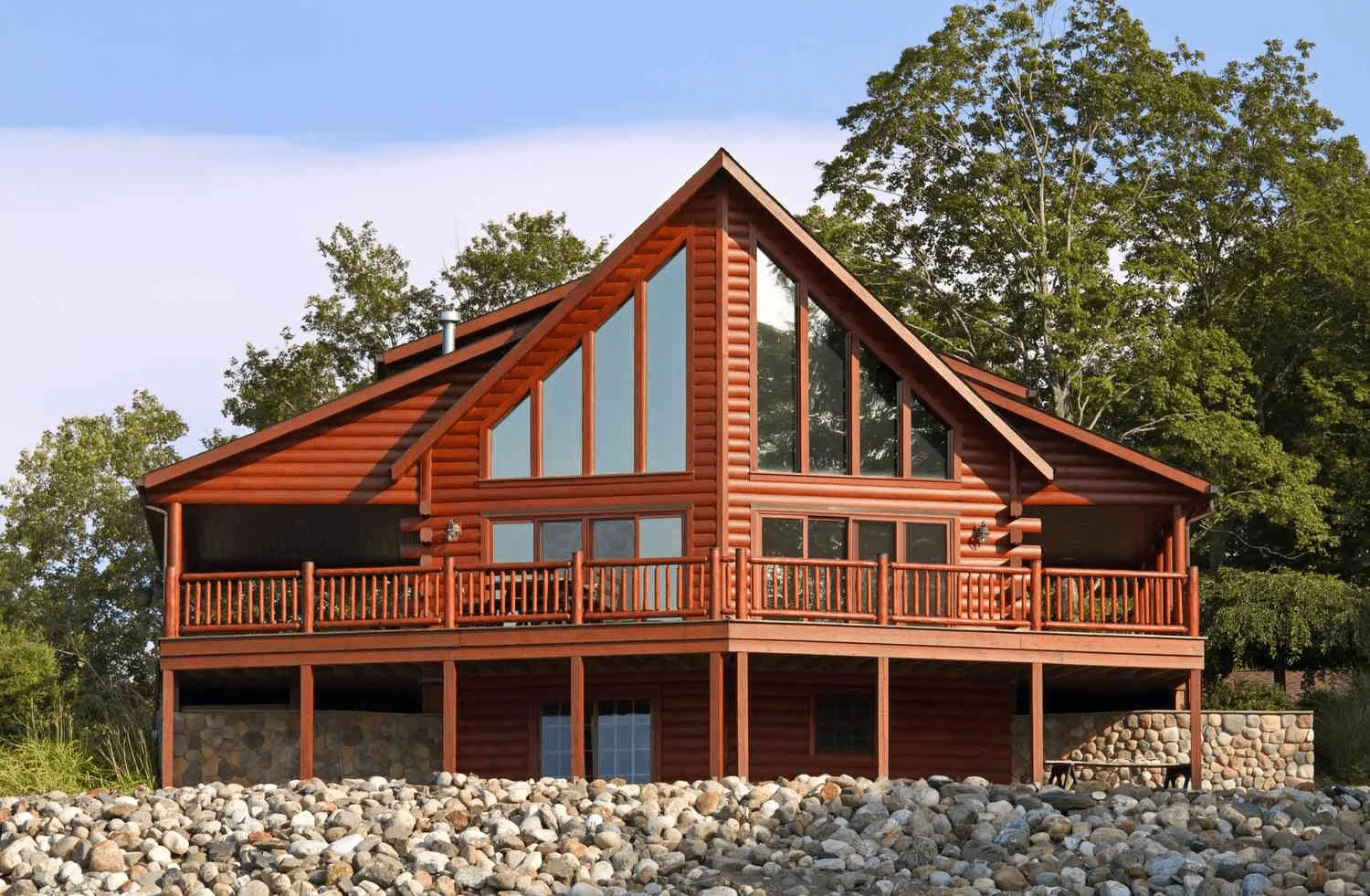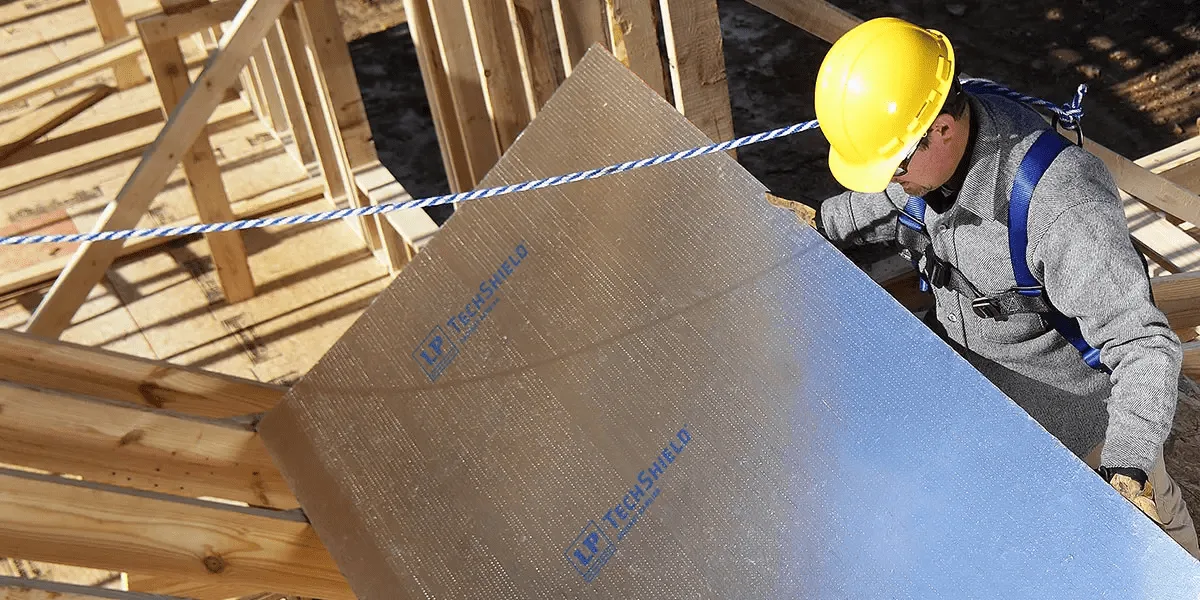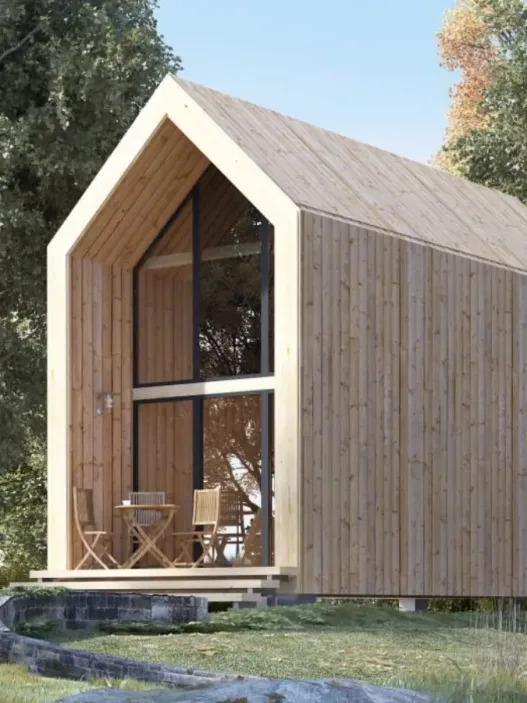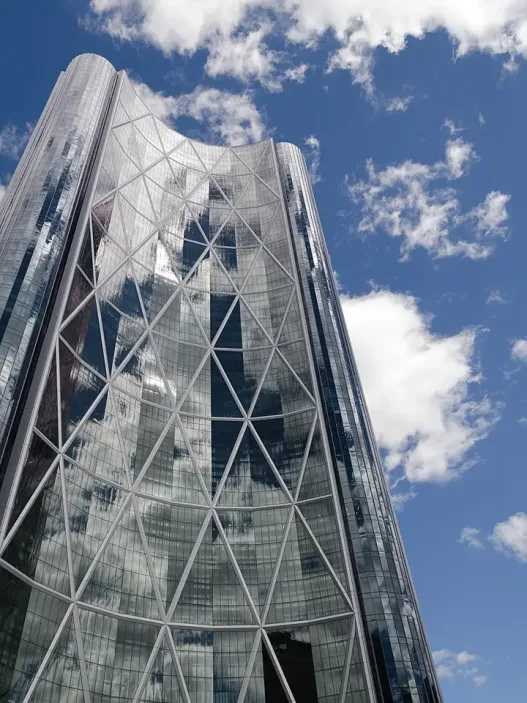Copper cladding is a fascinating architectural element that has gained popularity due to its aesthetic appeal and functional benefits. The technique involves cladding the exterior of a building with sheets of copper, creating a striking visual impact while also offering practical advantages. The use of copper in architecture dates back centuries, but its modern applications reveal a mix of tradition and innovation. This exploration of copper cladding examines its definition, historical significance, architectural significance, relationship to postmodern design and the evolution of materials used in construction.

Definition of Copper Plating
In essence, copper cladding refers to the application of copper sheets or panels to the exterior surfaces of buildings. This method not only enhances the visual character of a structure, but also provides durability and protection against environmental elements. Copper is a versatile material known for its malleability, allowing architects to create intricate designs that can follow the contours of a building. In addition, as copper ages, it develops a distinctive patina that can range from rich browns to vibrant greens, adding to its charm and character.
Historical Context
The use of copper in architecture has a long history, tracing its roots back to ancient civilizations. For example, the Romans recognized the durability and beauty of copper and used it for roofs and decorative elements. In the Middle Ages, churches and cathedrals often had copper roofs, demonstrating the material’s capacity to withstand the test of time. As architectural styles evolved, so did the use of copper. The 19th and early 20th centuries saw an increase in the use of copper in industrial and public buildings, emphasizing its adaptability and functionality. This historical context shows how copper has evolved from a practical building material to an iconic element in contemporary architecture.
Importance in Architecture
Copper cladding serves multiple roles in architecture. Beyond its aesthetic appeal, it offers practical benefits such as weather resistance, insulation and low maintenance. Buildings clad in copper often exhibit improved energy efficiency, as the material can help regulate indoor temperatures. Furthermore, copper’s antimicrobial properties contribute to healthier indoor environments. Architecturally, copper offers a unique opportunity for creativity, allowing for innovative designs that can reflect the personality of a building. Its ability to harmonize with a variety of styles, from traditional to modern, makes it a preferred choice among architects who want to create distinctive structures.
Overview of Postmodern Architecture
Postmodern architecture emerged in the late 20th century and marked a departure from the strict tenets of modernism. Characterized by eclectic styles, playful forms and a mix of materials, postmodern buildings often embrace historical references and cultural contexts. Copper cladding fits seamlessly into this narrative as it allows for experimentation and artistic expression. Architects have utilized copper not only for its durability, but also for its ability to evoke a sense of history and place. While stimulating the viewer’s imagination, copper clad buildings can convey a message of continuity by bridging the past and the present.
Evolution of Materials
The evolution of building materials has significantly influenced architectural design and copper has been a key player in this transformation. In the past, buildings were primarily constructed with local materials such as wood, stone and clay. However, the industrial revolution opened up new materials such as steel and concrete, expanding the possibilities for architects. Today, copper stands out as a sustainable choice, especially in an era focused on environmentally friendly building practices. Advances in technology have also facilitated the development of innovative copper alloys and processes that enhance copper’s performance and aesthetic qualities. This ongoing evolution reflects a growing awareness of sustainability and the importance of materials in shaping our built environment.
In sum, copper cladding is much more than a design choice; it is a material steeped in history and significance, offering both beauty and functionality. As architects continue to explore creative possibilities, copper’s role in contemporary architecture will continue to be vital, inspiring future generations to appreciate its harmonious blend of tradition and innovation.
Characteristics of Copper Cladding
Copper cladding is gaining popularity in modern architecture for its unique blend of aesthetic appeal, durability and environmental benefits. Often used to clad buildings, roofs and even interiors, this material offers a distinctive appeal that has evolved over time. Understanding the properties of copper cladding can help architects, builders and homeowners appreciate its value in contemporary design.
Aesthetic Qualities
Copper cladding stands out for its striking aesthetic qualities. When first installed, it exhibits a bright, shiny appearance that can add elegance to any structure. As the material ages, it develops a rich palette of colors ranging from deep reds and oranges to muted greens and blues. This transformation, known as patina, not only enhances visual appeal, but also reflects the passage of time and environmental influences, making each building unique.
Architects often use copper to create modern yet timeless designs. Its versatility allows it to complement a variety of architectural styles, from sleek, minimalist structures to ornate historic buildings. The interaction of light on copper surfaces can create stunning visual effects, making it an ideal choice for facades that require a dynamic look throughout the day.
Durability and Longevity
Durability is one of the most important advantages of copper. Known for its resistance to corrosion, copper cladding can withstand harsh weather conditions, including heavy rain and snow. Unlike other materials, copper does not rust, making it a reliable choice for both residential and commercial buildings.
The longevity of copper cladding is impressive; with the right installation, it can last for more than a century. This longevity not only reduces the need for frequent replacement, but also contributes to cost savings in the long run. Buildings clad in copper often retain their structural integrity and visual appeal for generations, making it a sustainable choice in the face of modern architectural demands.
Environmental Impact
In today’s environmentally conscious world, the environmental impact of building materials is a critical issue. Copper is a highly sustainable option due to its recyclability. In fact, copper can be recycled indefinitely without losing its quality. This significantly reduces the demand for new copper extraction, which can harm the environment.
Furthermore, copper’s energy efficiency contributes to building performance. Its thermal properties can help regulate indoor temperatures, reducing the need for excessive heating and cooling. By using copper cladding, architects can create buildings that are not only aesthetically pleasing but also environmentally sensitive.
Patina Formation
The patina that forms on copper surfaces is one of copper’s most fascinating properties. Initially copper starts out as a bright, shiny metal, but over time it develops a protective layer of copper oxide. This layer changes color due to oxidation, taking on various shades.
Patina plays a very important role; it protects the underlying metal from further corrosion, extending the life of the coating. Many architects and designers embrace this natural process and see the evolving color as an integral part of the building’s identity. Each building tells its own story through its unique patina, reflecting its age and the environmental conditions it has encountered.
Maintenance Considerations
While copper cladding is known for its durability, it does require some maintenance to maintain its appearance and functionality. Initially, many building owners appreciate the shiny appearance of new copper, but as it ages they may want to address the development of patina.
Regular cleaning can help maintain the desired appearance. For those who prefer a shiny, polished look, a gentle cleaning with specialized solutions can restore the shine. However, many people prefer to let the patina develop naturally, allowing the building to become its own unique character.
It is also important to make sure that the installation is done correctly to avoid problems such as water accumulation, which can lead to corrosion. Overall, copper cladding is relatively low maintenance compared to other materials, making it a worthwhile investment for many.
In summary, copper cladding is a remarkable architectural choice that combines beauty, durability and sustainability. Its aesthetic qualities, longevity and positive environmental impact make it an exciting option for contemporary designs, while the patina formation adds a layer of uniqueness that develops over time. As more architects and builders discover copper’s potential, its role in the architectural landscape will undoubtedly continue to grow.
Notable Examples of Copper Cladding
Copper cladding has become one of the hallmarks of modern architecture with its unique aesthetic and functional properties. This material not only adds striking visual appeal, but also offers durability and sustainability. Copper develops a rich patina as it ages, enhancing its beauty over time. In this chapter, we will examine some of the most important architectural masterpieces in which copper cladding is prominent, and explore how this material has shaped their identity and function.
Bilbao Guggenheim Museum
Designed by Frank Gehry, the Guggenheim Museum in Bilbao, Spain is an iconic example of contemporary architecture that showcases the versatility and beauty of copper cladding. Opened in 1997, the curvilinear form of the museum is wrapped in organic shapes that seem to flow and change with the light. The façade is composed of titanium, but also includes sections of copper, chosen for their ability to weather and develop a distinctive patina.
This transformative process not only contributes to the aesthetics of the building, but also serves a practical purpose by preserving the underlying structures. The museum has become a cultural icon, attracting millions of visitors and launching a renaissance in the city of Bilbao. The copper cladding complements the surrounding landscape, reflecting the river and the sky, while the building itself becomes a canvas that evolves with its surroundings.
Vanna Venturi House
Designed by Robert Venturi in the 1960s, the Vanna Venturi House in Pennsylvania is a pioneering example of postmodern architecture. Featuring a striking facade clad in copper, the house plays a vital role in the design narrative. The house is characterized by its complex geometry and playful interpretation of traditional forms, while the copper cladding adds a warm and inviting tone to the structure.
The choice of copper reflects Venturi’s desire to challenge architectural conventions and embrace a more inclusive design approach. As the copper wears, it develops the character of the house and reflects Venturi’s belief that architecture should evolve with its inhabitants. This residence stands as a testament to how copper can be used not just as a material, but as an integral part of a building’s story.
Seattle Central Library
Designed by Rem Koolhaas and opened in 2004, the Seattle Central Library is a striking example of modern urban architecture with an elaborate use of copper cladding. The building’s innovative design features a glass and steel exterior, but also incorporates copper elements that contribute to its dynamic silhouette. Copper acts as a contrasting material, providing warmth against the colder tones of glass and steel.
This library is not just a repository of books; it is a community center designed to facilitate learning and interaction. The choice of materials, including copper, underscores the library’s role as a space that invites exploration and creativity. As the copper ages, it adds depth to the visual narrative of the library, making it a living part of the cityscape that reflects the vibrancy of Seattle.
Kiasma Museum of Contemporary Art
The Kiasma Museum of Contemporary Art in Helsinki, Finland, designed by Steven Holl, is another remarkable example of copper cladding in architecture. Completed in 1998, the museum is characterized by its fluid form and innovative use of space. The copper cladding serves both aesthetic and functional purposes, allowing the building to blend harmoniously with its urban surroundings.
The rich, warm tones of copper create a warm atmosphere that invites visitors to discover the contemporary art it houses. Over time, copper has developed a unique patina that reflects Helsinki’s changing seasons and light conditions. Kiasma exemplifies how copper can be used to strengthen a building’s integration into its surroundings while also making it stand out as a work of art in its own right.
Copper House in Massachusetts
Designed by architect David Sellers in Massachusetts, the Copper House demonstrates how copper cladding can be used in residential architecture to create a striking yet harmonious home. Completed in the early 2000s, the house features a modern design that emphasizes sustainability and a connection to nature. The copper exterior not only provides visual interest, but also reflects the architect’s commitment to using materials that age gracefully.
As the copper ages, it develops a beautiful patina that connects the house to its natural surroundings, creating a sense of continuity with the landscape. This residence demonstrates the potential of copper to embody both modern design principles and a deep respect for the environment. The Copper House is an excellent example of how careful material choices can enhance both the aesthetic and ecological aspects of architecture.
In sum, these remarkable examples reveal how copper cladding can transform buildings into extraordinary works of art. Each structure showcases the material’s unique qualities, allowing it to tell its own story through aging and interaction with the environment. The use of copper in architecture highlights a broader trend towards sustainable, aesthetic and context-relevant design and paves the way for future innovations in this field.
Techniques and Applications
Architectural techniques and practices are vital in shaping the built environment. They influence not only aesthetics, but also functionality, sustainability and the overall user experience. This chapter comprehensively examines these key topics, covering various installation methods, design considerations, material integration, urban use and innovations in coating technology.
Installation Methods
Installation methods are critical to ensuring that architectural features are not only visually appealing but also structurally sound. Different materials require specific approaches and the choice of method can significantly affect durability and maintenance. For example, the traditional bricklaying process involves careful stacking and mortar bonding of bricks, ensuring stability and alignment. In contrast, modern materials such as glass and metal often use prefabricated panels that can be assembled quickly and efficiently on site.
A notable trend in installation is the use of modular construction. This technique involves creating sections of a building in a factory environment and then transporting and assembling them on site. This method not only speeds up the construction process, but also minimizes waste and labor costs. Real-world applications of modular methods can be seen in temporary structures such as pop-up shops or emergency housing where rapid deployment is crucial.
Design Considerations
Design considerations cover a wide range of factors that influence how a building looks and functions. These include aesthetics, structural integrity, environmental impact and user experience. An important aspect of design is understanding the context in which a building is located. For example, a skyscraper in a crowded urban area should not only stand out, but also blend in with its surroundings and respond to local climatic conditions.
Sustainability is another critical design issue. Architects are increasingly integrating green building practices such as passive solar design, which maximizes natural light and reduces energy consumption. In addition, the choice of materials also plays an important role in sustainability. Using locally sourced, renewable or recycled materials can minimize a building’s carbon footprint and promote environmental stewardship. A well-designed building not only meets the needs of its inhabitants, but also respects and enhances its surroundings.
Integration with other materials
The integration of various materials is one of the hallmarks of modern architecture. This approach allows architects to take advantage of the unique properties of different materials to achieve the desired results, both visually and functionally. For example, combining concrete and wood can create striking contrasts in texture and color, while taking advantage of the strength of concrete and the warmth of wood.
The integration of materials is also crucial for energy efficiency. For example, the use of insulated glass in combination with metal frames can improve thermal performance while providing a stylish aesthetic. This practice is increasingly common in office buildings, where large glass facades are complemented by efficient insulation systems to reduce heating and cooling costs.
Case studies such as the use of corten steel in buildings exemplify successful material integration. Corten’s rich, rust-like appearance adds character, while its durability makes it suitable for a variety of climates. Architects continue to explore innovative combinations, pushing the boundaries of what is possible in building design.
Use in Urban Environments
Urban environments present unique challenges and opportunities for architecture. With limited space and a wide range of activities, buildings must be designed to accommodate a variety of functions while maintaining aesthetic appeal. For example, the integration of green spaces has become a priority in urban design, leading to the creation of rooftop gardens and vertical parks that increase biodiversity and improve air quality.
Furthermore, urban architecture should consider the social dynamics of society. Increasingly, public spaces, such as plazas and community centers, are being designed to encourage interaction and participation among urban residents. The High Line in New York is a prime example of the transformation of an abandoned railroad into a vibrant public park, demonstrating how innovative design can revitalize urban areas and improve quality of life.
Furthermore, smart city initiatives are influencing how buildings are integrated into urban landscapes. The use of technologies in architecture, such as smart sensors for energy management, increases the functionality of urban structures and contributes to sustainable development. As cities evolve, the role of architecture in shaping urban experiences becomes more important.
Innovations in Cladding Technology
Cladding technology has made remarkable advances in architecture, improving both functionality and aesthetics. Cladding serves as the protective outer layer of a building, affecting energy efficiency, weather resistance and overall appearance. Recent innovations include the development of dynamic cladding systems that can adapt to changing environmental conditions. For example, some new materials can change color or transparency depending on temperature or sunlight, contributing to energy savings and creating visually striking facades.
Another exciting development is the use of lightweight and composite materials that simplify installation while providing excellent insulation properties. These materials not only reduce construction costs, but also allow for more complex and creative designs. In addition, sustainable cladding options, such as those made from recycled materials or incorporating green technologies such as solar panels, are becoming increasingly popular.
Real-world applications of these innovations can be seen in buildings such as Bosco Verticale in Milan, where the vertical forest concept integrates natural elements into the cladding, providing stunning visual appeal while promoting biodiversity. As architects continue to explore these cutting-edge technologies, the potential for innovative, sustainable and aesthetically pleasing designs in architecture is limitless.
In summary, techniques and practices in architecture play a crucial role in shaping our environment. By understanding and utilizing various installation methods, design considerations, material integration, urban use and advances in technology, architects can create spaces that are not only functional but also enrich the human experience.
Cultural and Artistic Significance
Architecture is more than the design and construction of buildings; it is a living expression of culture, identity and artistic vision. From ancient temples to modern skyscrapers, architecture reflects the values, beliefs and aspirations of societies. This chapter explores the rich tapestry of cultural and artistic significance in architectural practice, exploring the interplay between symbolism, materiality, design movements, public perception and artistic expression.
Symbolism in Architecture
Symbolism in architecture serves as a powerful tool for conveying meaning. Buildings often embody cultural narratives, historical contexts and social values. For example, Gothic cathedrals, with their tall spires and intricate stained glass, symbolize the connection between the mundane and the divine, reflecting the aspirations of medieval society. Similarly, the Parthenon in Athens stands not only as a temple to Athena, but also as a symbol of democracy and civic pride, showcasing the values of ancient Greece.
Architects consciously integrate symbols into their designs, using forms, materials and spatial arrangements to evoke certain emotions or ideas. In many cultures, the use of specific shapes, such as circles representing unity and wholeness, plays an important role in architectural symbolism. This layer of meaning invites viewers to engage with the buildings on a deeper level, encouraging an exploration of their cultural significance.
Copper in Different Cultures
A versatile and enduring material, copper has been used in architecture for centuries and has left a rich cultural imprint on various civilizations. In ancient times, copper was used for decorative elements, roofing and sculpture, reflecting both the aesthetic and functional aspects of architecture. The iconic green patina seen on structures such as the Statue of Liberty is not just the result of oxidation; it symbolizes durability and the passage of time.
In many cultures, copper is associated with wealth and status. In Islamic architecture, for example, the intricate copper domes that adorn mosques symbolize both beauty and the divine. In contrast, indigenous cultures have often used copper for its connection to the earth and have produced objects in accordance with their spiritual beliefs. This duality of copper as both a practical and symbolic element shows its importance in architectural narratives around the world.
Impact on Postmodern Design
Postmodern architecture emerged as a reaction against the rigidity of modernism, embracing complexity, contradiction and eclecticism. This movement drew inspiration from historical styles, cultural references and a range of artistic expressions. Architects such as Robert Venturi and Frank Gehry challenged traditional notions of beauty and function by introducing playful elements, vibrant colors and unexpected forms into their designs.
Postmodern architecture often reflects a deeper cultural critique and deals with social and political themes. For example, the Guggenheim Museum in Bilbao, designed by Gehry, serves as a cultural landmark that goes beyond mere functionality, reshaping the urban landscape and revitalizing the city. This approach emphasizes the importance of context and narrative in architecture, showing how buildings can serve as a canvas for artistic expression and social commentary.
Artistic Expression Case Studies
The study of specific case studies reveals how architecture serves as a profound form of artistic expression. The Sydney Opera House, with its iconic sail-like roof, is not only an engineering marvel, but also a representation of Australian identity. Designed by Jørn Utzon, its organic forms and innovative construction techniques challenge traditional architectural norms and reflect a spirit of creativity and cultural expression.
Another notable example is the Sagrada Familia in Barcelona, designed by Antoni Gaudi. Still under construction, this basilica is a testament to the combination of craftsmanship and artistic vision. Gaudi’s use of natural forms, intricate facades and vibrant mosaics creates a space that invites contemplation and awe. These case studies show how architecture can go beyond mere functionality and become a powerful tool for artistic and cultural storytelling.
Public Perception and Reception
Public perception of architecture plays an important role in its significance and legacy. Buildings are not just structures; they are part of the fabric of everyday life and influence the way societies interact and relate to their environment. The reception of architectural works can vary greatly, influenced by cultural, social and personal factors.
For example, I.M. Pei’s controversial design for the Louvre Pyramid was initially criticized, but eventually became a beloved symbol of the museum. This shift in perception illustrates how time and context can change the public’s relationship with architecture. Engaging with the community, incorporating local narratives and responding to cultural values can enhance the reception of a building and promote a sense of belonging and identity.
In conclusion, the cultural and artistic significance of architecture is a multifaceted exploration of human expression. Through symbolism, use of materials, design movements and public participation, architecture serves as a powerful reflection of society’s values, aspirations and creative spirit. Whether through the grandeur of historic monuments or the innovation of contemporary designs, architecture continues to inspire and provoke thought, shaping the world we live in.
The Future of Copper Cladding in Architecture
Copper cladding has long been recognized for its aesthetic appeal, durability and natural resistance to corrosion. Looking to the future of architecture, the role of copper is evolving in line with sustainability trends, technological innovations and the changing needs of urban environments. This research explores the exciting possibilities that copper cladding holds for future architectural applications.
Sustainable Design Trends
Sustainable design is becoming increasingly prominent in architectural practice and copper cladding is well positioned to play a vital role in this movement. Architects and builders are turning to materials that not only enhance the aesthetics of a building, but also contribute to its environmental performance. Copper is a highly recyclable material, which means that structures can be designed with its lifespan in mind. The longevity of copper cladding – often lasting more than a century – reduces the need for frequent replacement and thus minimizes waste.
Furthermore, copper has natural antimicrobial properties, making it an excellent choice for buildings focused on health and well-being. In urban areas where air quality is a growing concern, copper surfaces can help improve hygiene in public spaces. As cities continue to adopt green building certifications such as LEED, the increased use of copper cladding is likely to create visually stunning architectural features while reflecting a commitment to sustainable practices.
Innovations in Copper Alloys
Innovations in materials science are paving the way for new copper alloys that enhance the performance of cladding systems. These developments allow architects to take advantage of copper’s benefits when addressing specific challenges such as weight, strength and corrosion resistance. New alloys can be designed to withstand harsh weather conditions, making them suitable for different climates and extending the life of buildings.
For example, some modern copper alloys contain elements such as aluminum or titanium, which can increase resistance to oxidation and maintain the aesthetic appeal of the material over time. These innovations are particularly important for architects who want to achieve a distinctive look without sacrificing durability. The evolving properties of copper alloys also open up creative possibilities, allowing for complex designs and textures that can enhance the overall character of a building.
Insights for Urban Architecture
As urbanization continues to reshape the landscape of cities, the role of copper cladding in urban architecture is likely to expand. With the rise of smart cities, where technology is integrated with infrastructure, copper’s aesthetic and functional properties can complement modern design principles. Architects can increasingly use copper to create dynamic facades that increase energy efficiency by responding to environmental conditions such as temperature and sunlight.
Also, as the urban population grows, more emphasis will be placed on creating multifunctional spaces. Copper cladding can be used in mixed-use developments and offers not only visual appeal but also practical benefits such as noise reduction and thermal insulation. Copper’s adaptability makes it an ideal candidate for innovative urban projects where form and function must work in harmony.
Challenges and Opportunities
While the future of copper plating is bright, it is not without its challenges. The initial cost of copper can be higher than other materials, which may deter some developers. However, its long-term benefits, such as durability and lower maintenance, can offset these initial investments. Furthermore, as demand for sustainable materials increases, the price of copper may stabilize and become a more accessible option.
Another challenge is the need for skilled labor to install copper cladding correctly. As architects push the boundaries of design, the complexity of installations can increase. But it also provides an opportunity for the industry to invest in education and training, ensuring that the craftsmanship associated with copper plating continues to evolve.
The Role of Technology in Future Applications
Technology is set to revolutionize the way copper cladding is designed, manufactured and integrated into buildings. Advances in computer-aided design (CAD) and building information modeling (BIM) allow architects to precisely visualize and plan complex structures. These tools enable the exploration of innovative forms and patterns that were previously difficult to achieve through traditional methods.
Furthermore, advances in manufacturing techniques such as digital fabrication and 3D printing can lead to more complex and customized copper plating solutions. This technology not only enhances design capabilities, but also enables materials to be used more efficiently, ultimately reducing waste. As the architecture industry embraces these technological advancements, the future of copper cladding is likely to be characterized by a mix of tradition and innovation, resulting in buildings that are both beautiful and sustainable.
In conclusion, the future of copper cladding in architecture is bright and marked by a commitment to sustainability, innovative material developments and the integration of technology. As architects continue to explore copper’s unique properties, we can expect to see its applications evolve and become a lasting choice for generations to come.
Discover more from Dök Architecture
Subscribe to get the latest posts sent to your email.



